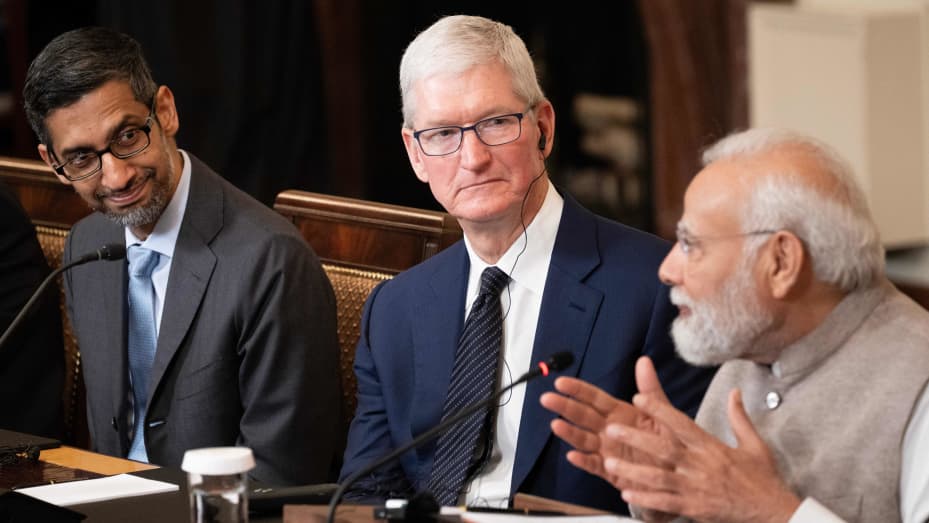
By Edson Baraukwa | Africa Guardian
In today’s world, the global competition for talent and innovation is more intense than ever. Unfortunately, South Africa and other African nations are losing some of their brightest minds and most skilled professionals to the world. This trend is particularly evident in the West, where countries like the United States and major corporations are increasingly turning to India and its highly skilled workforce. However, this phenomenon remains largely underappreciated in South Africa and across the African continent, even as we observe it with growing interest.
While the dynamics between African countries and India differ, there are notable similarities worth exploring, especially considering that India, like many African nations, is a developing country and a former colony. Several factors contribute to India’s success, but we will focus on those most relevant to other developing economies.
The world’s economic powerhouses are actively courting India, with Africa watching from the sidelines. India’s ability to leverage its relationships with major economies for its national benefit is a remarkable case study. India has become a global hub for talent acquisition across various sectors, including health, agriculture, information technology, and financial technology (FinTech). As India continues to progress, it is positioning itself as a rising superpower.
According to Ashwin Lakhan, co-head of investment banking at Rand Merchant Bank, “India’s IT expertise is expected to be a valuable asset for South Africa’s development. It will cater to South Africa’s growing demand for digital transformation across various sectors, such as banking, financial services, digital public infrastructure, and healthcare. Increased collaboration in areas like fintech and cybersecurity is also anticipated.”
Yet, a critical question remains: Do African leaders recognize that Africa’s greatest potential, much like India’s, lies in its youthful workforce, especially as many other parts of the world face aging populations? Unfortunately, weak leadership and inadequate education systems have become prevalent in several African countries, including South Africa, where the IT industry is largely dominated by Indians in many multinational firms.
This situation reflects an underutilized workforce in South Africa and across the continent, with many individuals either unemployed or unemployable, both locally and internationally. To compete on the global stage, South Africa and the rest of Africa need a deliberate and concerted effort by both governments and the private sector to strengthen educational systems, which are currently lagging behind industry needs. Additionally, African governments must intensify their efforts to develop skills that will make their workforce more attractive to both local and international markets.
India’s relationship with the United States today resembles what China’s relationship with the U.S. was decades ago, following Deng Xiaoping’s decision to open China to foreign investors. However, there are significant differences between India’s relationship with the U.S. and that of China.
Deng Xiaoping’s “Reform” and “Opening Up” policy in the late 1970s transformed China into the world’s leading manufacturer, providing the U.S. and the world with affordable finished products. The industrialization of China, supported by the U.S., relied heavily on millions of Chinese workers, many from rural and uneducated backgrounds, to build the Chinese economy and supply the world with low-cost goods. This dynamic helped the U.S. and other countries benefit from low inflation. However, today, the U.S. faces a China that has become an economic powerhouse, largely “Made in the USA,” and is now navigating a rapidly evolving multipolar world.
In a recent article titled “Wall Street Lands on India, Looking for Profits It Can’t Find in China,” New York Times economic and business correspondent Alex Travelli highlights how global investors are flocking to India as an economic growth hub. This includes North American pension managers, sovereign wealth funds from the Persian Gulf and Singapore, Japanese banks, and private equity firms, all eager to invest in India.
Travelli’s optimism is grounded in the belief that India’s rise is inevitable, particularly as China’s economic engine slows after three decades of rapid growth and Russia is sidelined due to its invasion of Ukraine and subsequent sanctions from the U.S., Europe, and their allies.
Having surpassed China as the world’s most populous nation, with over 1.4 billion people, India is now a sought-after partner for economic collaborations beyond talent acquisition. Global Top 500 companies, Silicon Valley, FinTech firms, and business leadership are increasingly dominated by Indians or Indian Americans. India’s strategic partnerships extend beyond its role as a global center for human capital; it is emerging as a political and economic powerhouse.
It will be fascinating to see how Prime Minister Narendra Modi continues to promote India as an emerging superpower, with the country projected to become the third-largest economy within the next three years. Additionally, as a BRICS member, India’s positioning in a growing multipolar world will be critical to watch.
While high levels of poverty and cheap labor still persist in India, the country is also known for its highly educated, internationally mobile workforce. This achievement reflects strong Indian leadership, offering a valuable lesson for African leaders striving to lift their countries out of poverty and degradation.
African leaders have a responsibility to make Africa great again. With a young and active human capital base at our disposal, we can no longer afford to blame others for our shortcomings.
___
